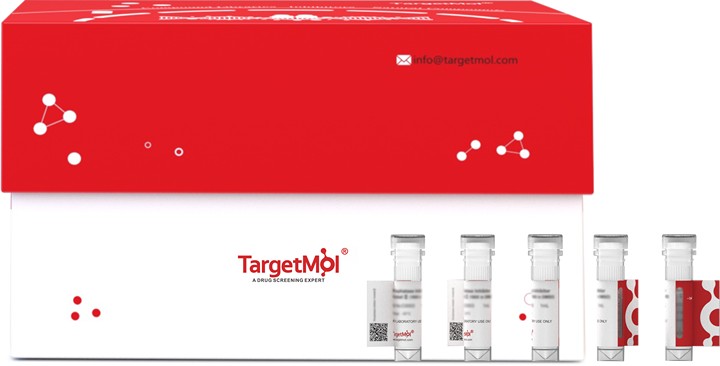- Remove All
 Your shopping cart is currently empty
Your shopping cart is currently empty
NEK7 Protein, Human, Recombinant (His & GST)
NIMA (never in mitosis gene a)-related kinase 7, NEK7 belongs to the NIMA subfamily, NEK Ser/Thr protein kinase family, protein kinase superfamily. NEKs (NIMA-related kinases) are mammalian serine/threonine (Ser/Thr) protein kinases structurally related to Aspergillus NIMA (Never in Mitosis, gene A), which plays essential roles in mitotic signaling. NEKs share an amino-terminal catalytic domain related to NIMA, an Aspergillus kinase involved in the control of several aspects of mitosis, and divergent carboxyl-terminal tails of varying length. NEKs are commonly referred to as mitotic kinases, although a definitive in vivo verification of this definition is largely missing. Reduction in the activity of NEK7 or its close paralog, NEK6, has previously been shown to arrest cells in mitosis, mainly at metaphase. NEK7 is a regulator of cell division, and reveal it as an essential component for mammalian growth and survival. The intimate connection between tetraploidy, aneuploidy, and cancer development suggests that NEK7 deregulation can induce oncogenesis. The endogenous NEK7 protein is enriched at the centrosome in a microtubule-independent manner. Overexpression of wt or kinase-defective NEK7 resulted in cells of rounder appearance, and higher proportions of multinuclear and apoptotic cells.

NEK7 Protein, Human, Recombinant (His & GST)
| Pack Size | Price | Availability | Quantity |
|---|---|---|---|
| 5 μg | $76 | 7-10 days | |
| 10 μg | $118 | 7-10 days | |
| 20 μg | $197 | 7-10 days | |
| 50 μg | $458 | 7-10 days |
Product Information
| Biological Activity | No Kinase Activity |
| Description | NIMA (never in mitosis gene a)-related kinase 7, NEK7 belongs to the NIMA subfamily, NEK Ser/Thr protein kinase family, protein kinase superfamily. NEKs (NIMA-related kinases) are mammalian serine/threonine (Ser/Thr) protein kinases structurally related to Aspergillus NIMA (Never in Mitosis, gene A), which plays essential roles in mitotic signaling. NEKs share an amino-terminal catalytic domain related to NIMA, an Aspergillus kinase involved in the control of several aspects of mitosis, and divergent carboxyl-terminal tails of varying length. NEKs are commonly referred to as mitotic kinases, although a definitive in vivo verification of this definition is largely missing. Reduction in the activity of NEK7 or its close paralog, NEK6, has previously been shown to arrest cells in mitosis, mainly at metaphase. NEK7 is a regulator of cell division, and reveal it as an essential component for mammalian growth and survival. The intimate connection between tetraploidy, aneuploidy, and cancer development suggests that NEK7 deregulation can induce oncogenesis. The endogenous NEK7 protein is enriched at the centrosome in a microtubule-independent manner. Overexpression of wt or kinase-defective NEK7 resulted in cells of rounder appearance, and higher proportions of multinuclear and apoptotic cells. |
| Species | Human |
| Expression System | Baculovirus Insect Cells |
| Tag | His, GST |
| Accession Number | Q8TDX7-1 |
| Synonyms | NIMA-related kinase 7 |
| Construction | A DNA sequence encoding the human NEK7 (NP_598001.1) (Met1-Ser 302) was fused with the N-terminal polyhistidine-tagged GST tag at the N-terminus. Predicted N terminal: Met |
| Protein Purity | > 95 % as determined by SDS-PAGE |
| Molecular Weight | 62.4 kDa (predicted); 58 kDa (reducing conditions) |
| Endotoxin | < 1.0 EU/μg of the protein as determined by the LAL method. |
| Formulation | Lyophilized from a solution filtered through a 0.22 μm filter, containing 50 mM Tris, 100 mM NaCl, pH 8.5, 0.5 mM Reduced Glutathione, 0.5 mM PMSF. Typically, a mixture containing 5% to 8% trehalose, mannitol, and 0.01% Tween 80 is incorporated as a protective agent before lyophilization. |
| Reconstitution | A Certificate of Analysis (CoA) containing reconstitution instructions is included with the products. Please refer to the CoA for detailed information. |
| Stability & Storage | It is recommended to store recombinant proteins at -20°C to -80°C for future use. Lyophilized powders can be stably stored for over 12 months, while liquid products can be stored for 6-12 months at -80°C. For reconstituted protein solutions, the solution can be stored at -20°C to -80°C for at least 3 months. Please avoid multiple freeze-thaw cycles and store products in aliquots. |
| Shipping | In general, Lyophilized powders are shipping with blue ice. |
| Research Background | NIMA (never in mitosis gene a)-related kinase 7, NEK7 belongs to the NIMA subfamily, NEK Ser/Thr protein kinase family, protein kinase superfamily. NEKs (NIMA-related kinases) are mammalian serine/threonine (Ser/Thr) protein kinases structurally related to Aspergillus NIMA (Never in Mitosis, gene A), which plays essential roles in mitotic signaling. NEKs share an amino-terminal catalytic domain related to NIMA, an Aspergillus kinase involved in the control of several aspects of mitosis, and divergent carboxyl-terminal tails of varying length. NEKs are commonly referred to as mitotic kinases, although a definitive in vivo verification of this definition is largely missing. Reduction in the activity of NEK7 or its close paralog, NEK6, has previously been shown to arrest cells in mitosis, mainly at metaphase. NEK7 is a regulator of cell division, and reveal it as an essential component for mammalian growth and survival. The intimate connection between tetraploidy, aneuploidy, and cancer development suggests that NEK7 deregulation can induce oncogenesis. The endogenous NEK7 protein is enriched at the centrosome in a microtubule-independent manner. Overexpression of wt or kinase-defective NEK7 resulted in cells of rounder appearance, and higher proportions of multinuclear and apoptotic cells. |
Dose Conversion
Sci Citations
Calculator
Tech Support

Copyright © 2015-2025 TargetMol Chemicals Inc. All Rights Reserved.


